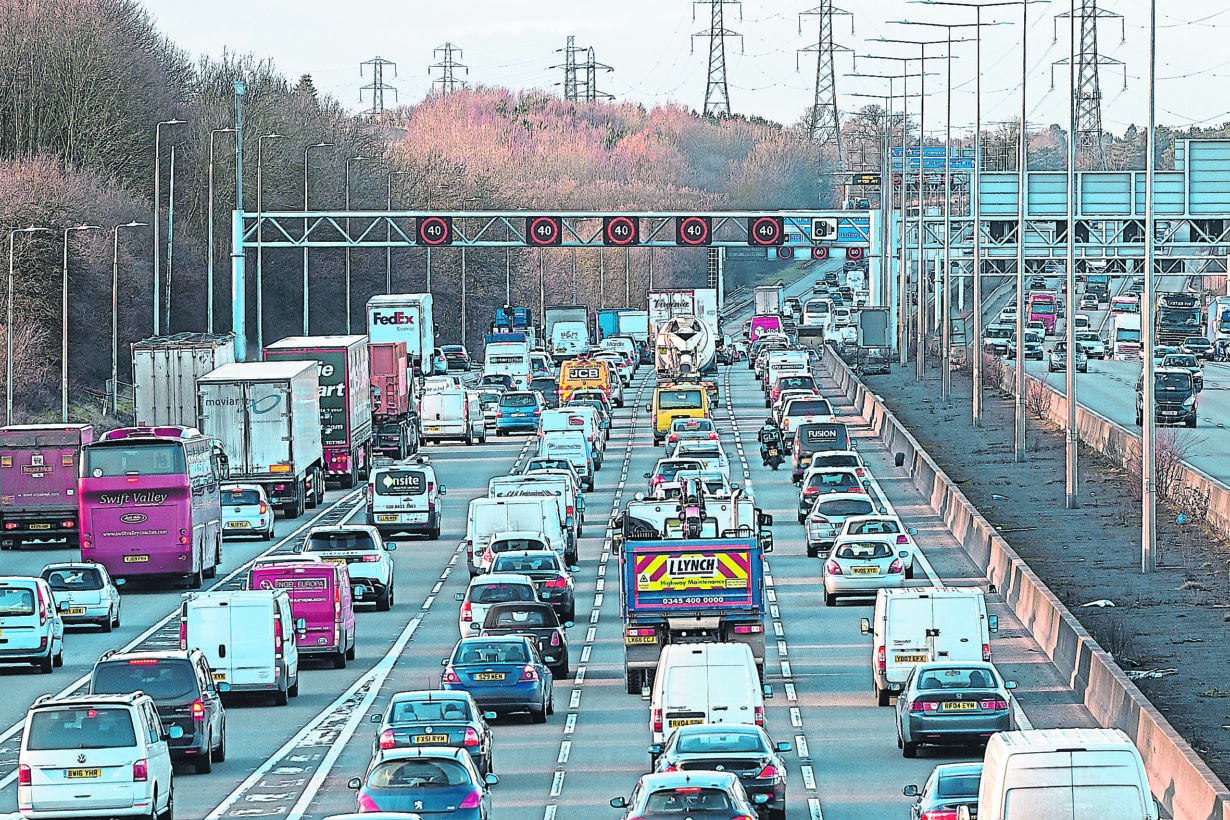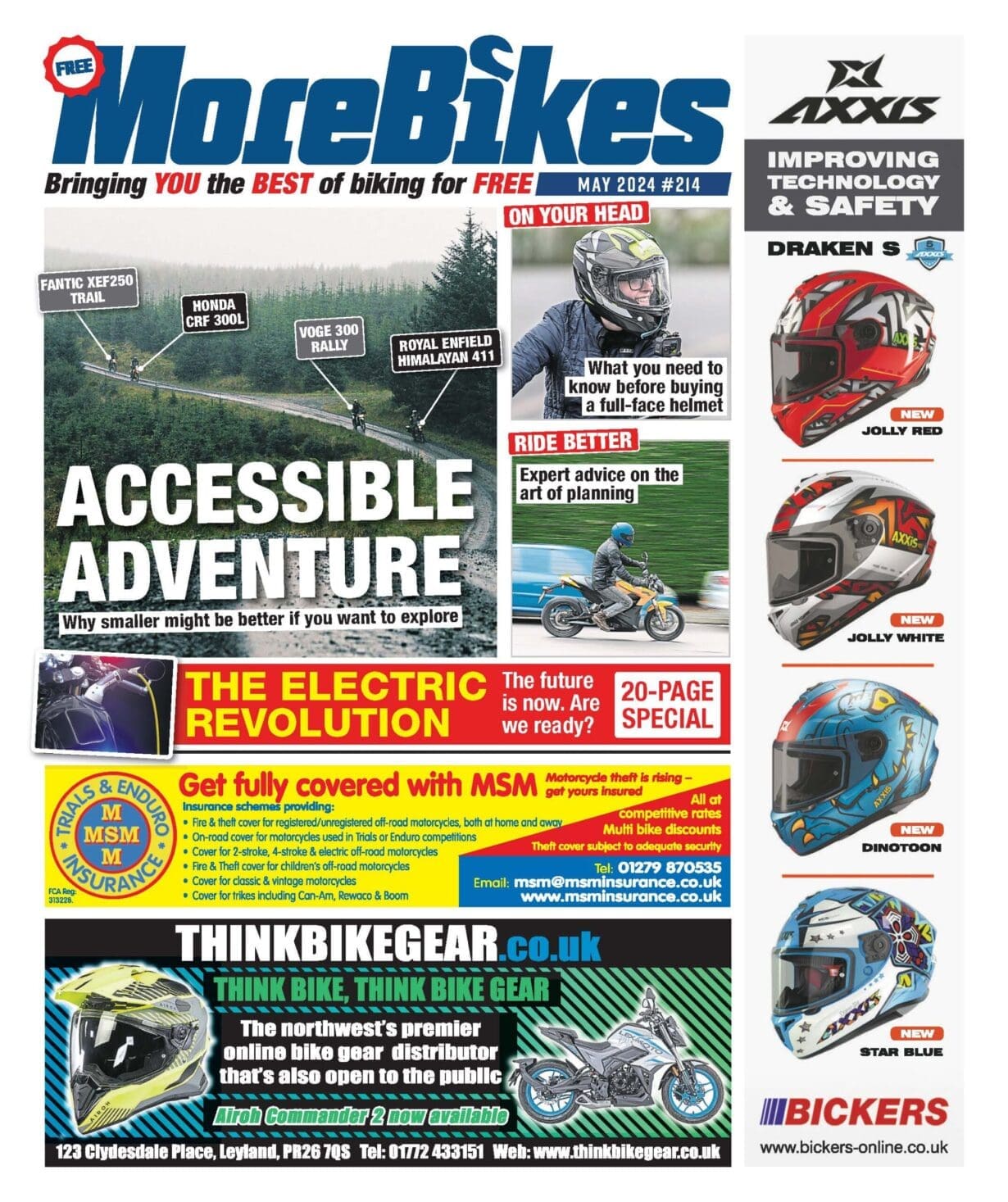Motorways are great for covering distance in no time, but they come with a whole set of considerations that you need to appreciate to make your progress safe. We talked to Harrison Browne from Phoenix Motorcycle Training to get an idea of the key areas to concentrate on…
Although motorways are the UK’s safest roads, they are also the fastest. They’re great for getting from A to B quickly, but as your speed increases, so does the potential for things to go wrong, and any crash on a motorway can be very nasty, especially if a motorcycle is involved. It’s always best to avoid a crash in the first place, and good riding skills can play a large part in crash avoidance.

Common mistakes
Enjoy everything More Bikes by reading the monthly newspaper, Read FREE Online.
Riding too close is the biggest mistake you can make on motorways. The two-second rule is a surprisingly long separation when you travel at high speeds, but it’s important to maintain it.
Exceeding the speed limit is an easy mistake to make on motorways, but again, it’s important to stay sharp and resist temptation. It is scary how much further your braking distance is at 80mph compared to 70mph. And it doesn’t matter how good a rider you are, the laws of physics apply to all of us the same. Speeding also links in with riding too close. Rear-end shunts unfortunately are a common scenario in motorway crashes.
Filtering too quickly between lines of traffic is another issue that easily arises out of impatience. While the ability to filter is a great advantage of riding a motorcycling, be careful not to ride much faster than the rest of the traffic moving. If you are zooming along between slow-moving cars, you don’t have much time to slow down or make an avoidance manoeuvre if someone changes lane or swerves to have a look past a car in front of them.
This brings us nicely to the old rule that applies to all roads, and should be remembered on motorways: never assume that other road users are going to do the right thing. Prepare for all eventualities, and expect the unexpected.
One of the unexpected things that people often do on motorways is to change lanes late and without warning, so try to put yourself in a position where you can anticipate and deal with such manoeuvres.
Undertaking (or overtaking on the left to be grammatically correct) other vehicles, particularly HGVs, is sometimes tempting, but should be avoided as drivers don’t generally expect it and can move to the inside lane without warning.

How to get it right
Unfortunately, there is no magic shortcut to getting motorway riding right instantly. Nothing can beat proper training and practice, and your skills will develop over time. And while there are plenty of sources available to do some background research, remember that not everyone is always right, and consulting qualified trainers is your best bet to get the right advice.
One thing that is easy to practice, and that will make a difference to your motorway riding, is looking as far ahead as you can. This will give you information about traffic and hazards much further away, and consequently give you more time to assess and react to anything that requires action.
As well as having an early warning of what is likely to happen, you should also be aware of what other road users are doing now, anticipate what they might do next, and plan your manoeuvres early in relation to this. This creates time and space around you, which is vital for your safety. Having space around you is important, especially when travelling at motorway speeds. Try to leave enough space between you and others, and if you’re wondering what that looks like, remember that the two-second rule at 70mph equates to approximately 14 car lengths.
When filtering, travel at a speed that allows you to stop if a vehicle changes lane without warning. This also gives those in front of you time to see you and move over to help. It’s a good idea not to filter when traffic is moving at 25mph or more, and only filter past at a maximum speed of 15mph over the speed of other vehicles.
There’s plenty more to think about when it comes to motorway riding, and depending on your abilities and riding style you may need help in specific areas, so the best way to advance your riding is to talk to a qualified trainer or a training school. Stay safe!
Am I allowed on motorways?
Not all bikes and riders are allowed to ride on motorways. Your motorcycle must be above 50cc in capacity, and unless you obtained a car licence before February 1, 2001, you will need at least an A1 licence or higher (a CBT certificate is not enough).
The experts
Phoenix Motorcycle Training
Phoenix Motorcycle Training is the UK’s largest motorcycle training provider, with 22 local training centres. The company provides high-quality courses delivered by fully-accredited instructors, and designed to meet a range of customer needs, from complete beginners to experienced riders.
Tel: 0330 223 4000
Email: [email protected]
Web: phoenixmotorcycletraining.co.uk
Advert
Enjoy everything More Bikes by reading the MoreBikes monthly newspaper. Click here to subscribe, or Read FREE Online.



